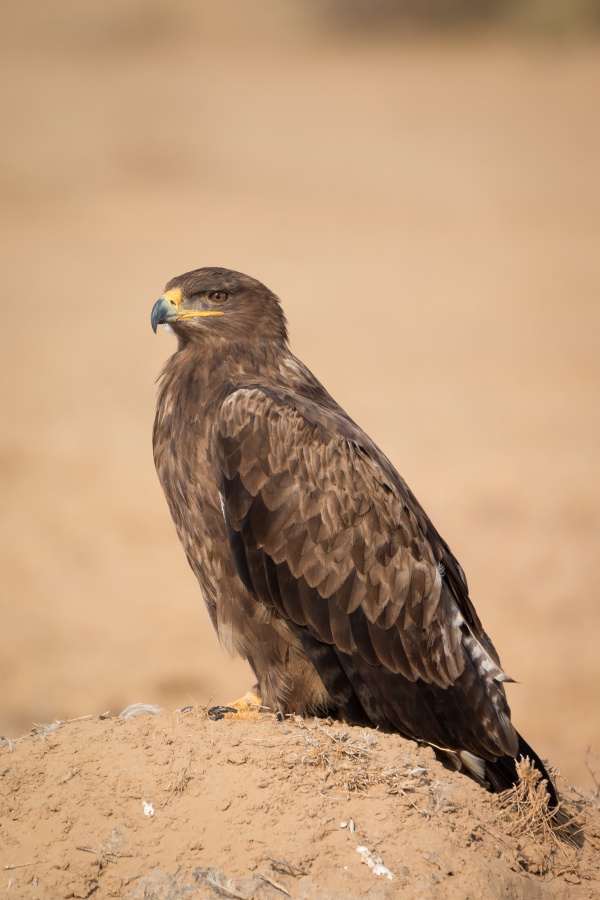Facts About Steppe eagle
The steppe eagle, a majestic bird of prey belonging to the Accipitridae family, boasts a captivating story. Initially thought to be closely related to the tawny eagle, it was later recognized as a distinct species due to significant differences in their physical appearance and anatomy.
This imposing bird is easily identifiable by its brown upperparts, blackish flight feathers, and a pale throat. Young steppe eagles exhibit a range of color variations, adding an element of surprise to their appearance. One hallmark feature is their call, which bears a notable similarity to a crow's bark.
Steppe eagles have an extensive breeding range, spanning from Romania to Mongolia. With the arrival of winter, they migrate to warmer climates in Africa or India. These eagles flourish in open, dry habitats such as deserts, steppes, and savannahs.
For nesting, the steppe eagle typically lays 1 to 3 eggs in a stick nest constructed in a tree. Their diet is diverse, predominantly featuring fresh carrion. However, they are opportunistic feeders and will also hunt small mammals and birds, and occasionally pilfer food from other raptors.
Regrettably, these eagles face grave threats from the use of diclofenac, a veterinary drug. Research has demonstrated that diclofenac can induce kidney failure and poisoning in steppe eagles, mirroring its catastrophic effects on vultures. As opportunistic scavengers, steppe eagles are particularly susceptible to this type of poisoning.
Culturally, the steppe eagle holds considerable significance. It adorns the flag of Kazakhstan and has the honor of being the national bird of Egypt, also appearing on the country's flag.

 Rwanda
Rwanda